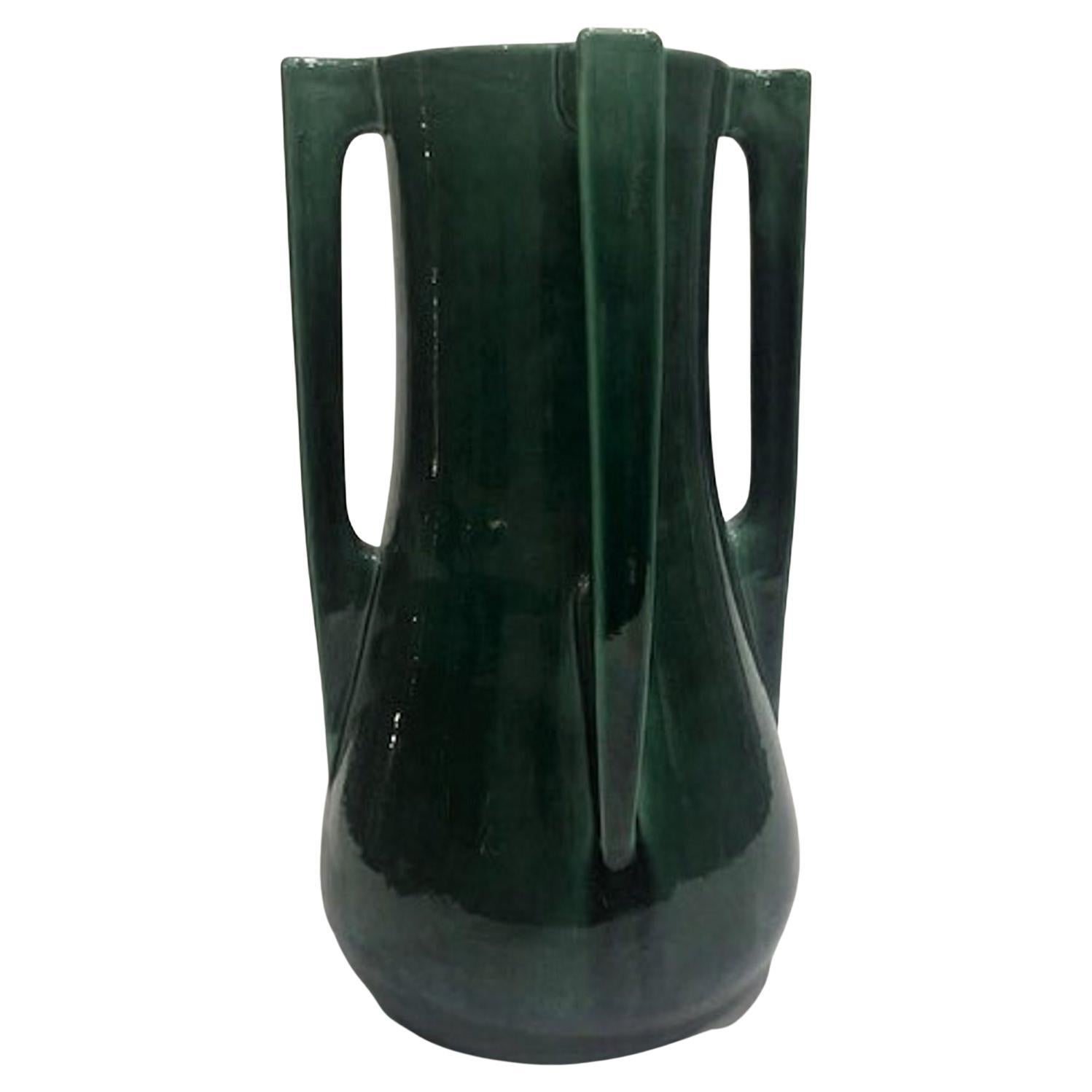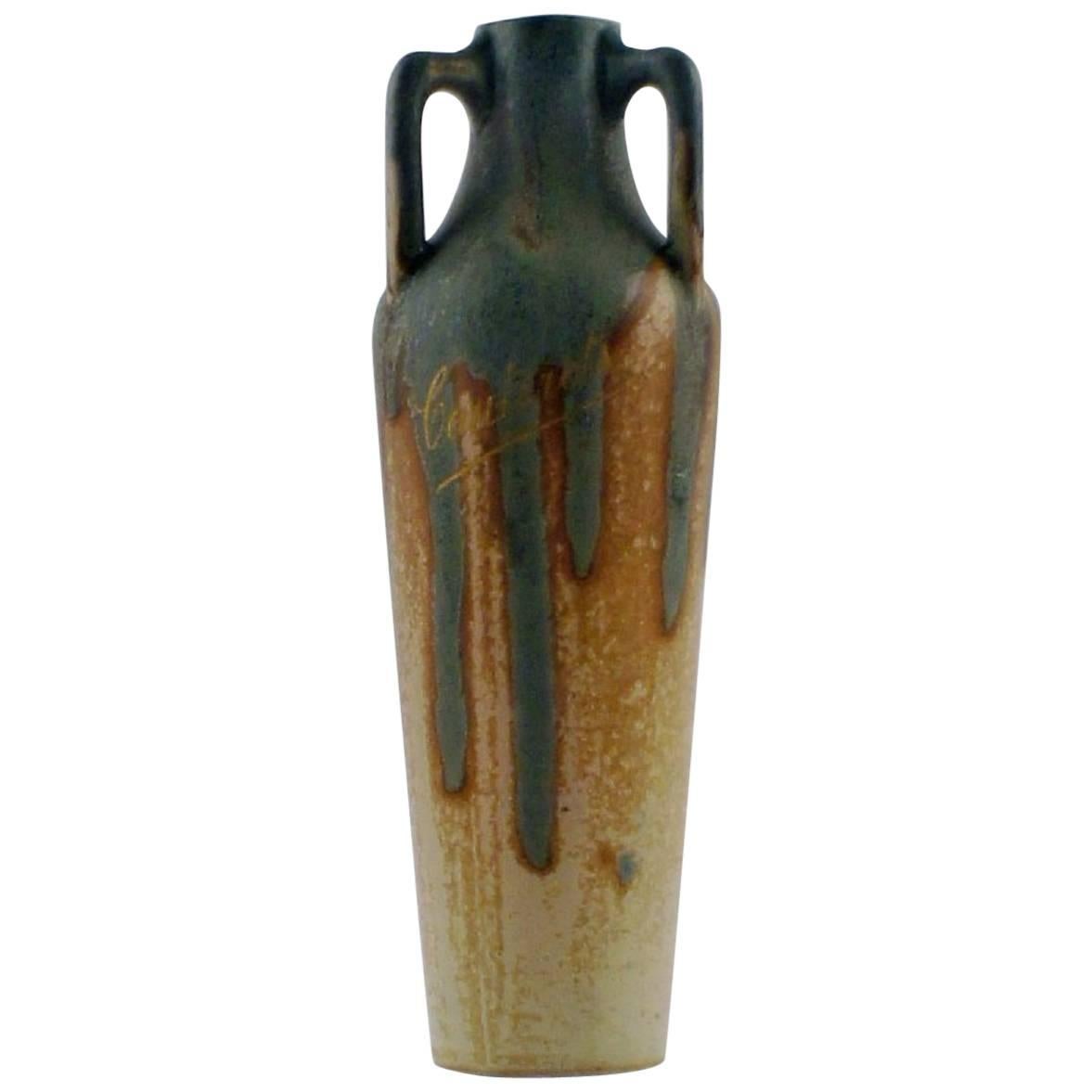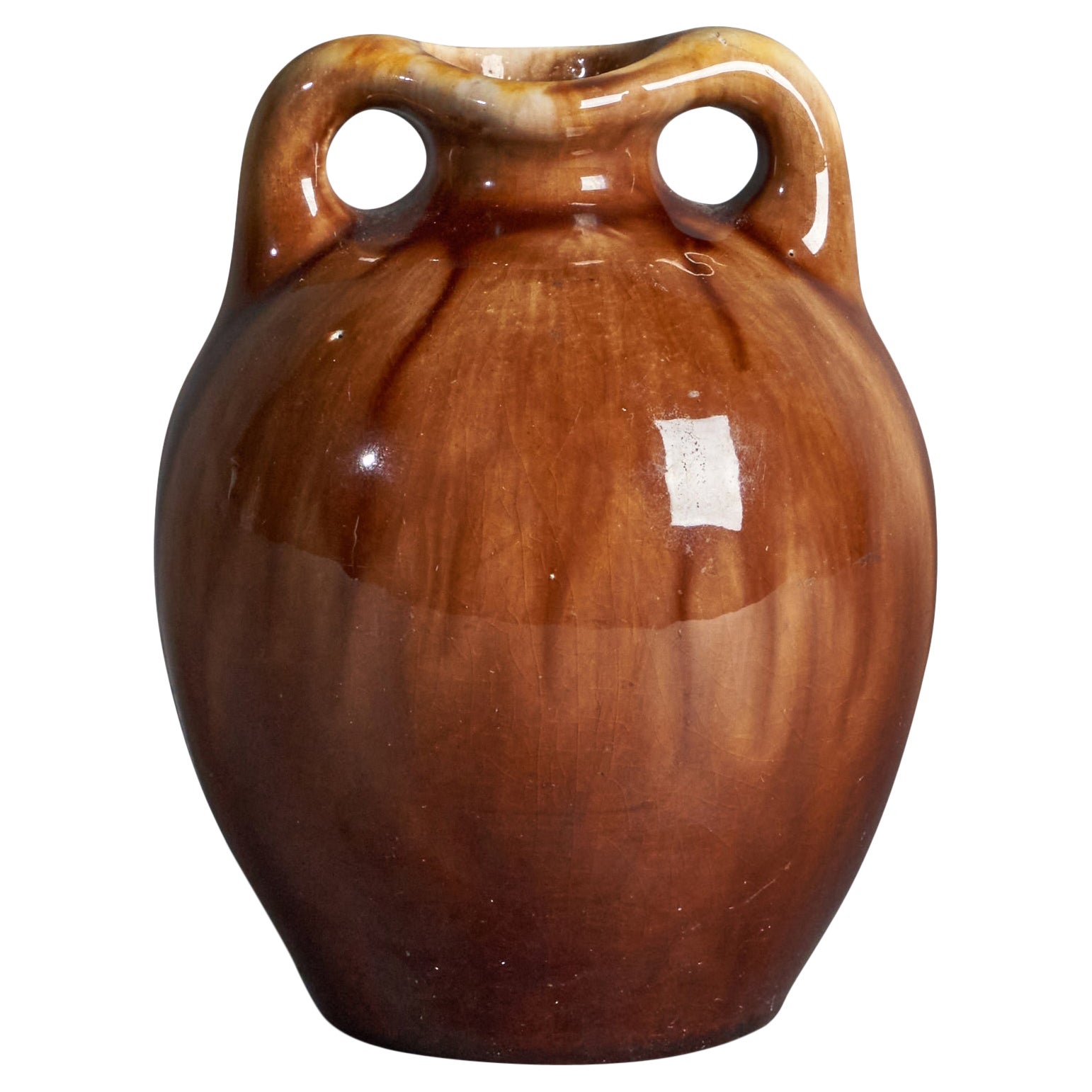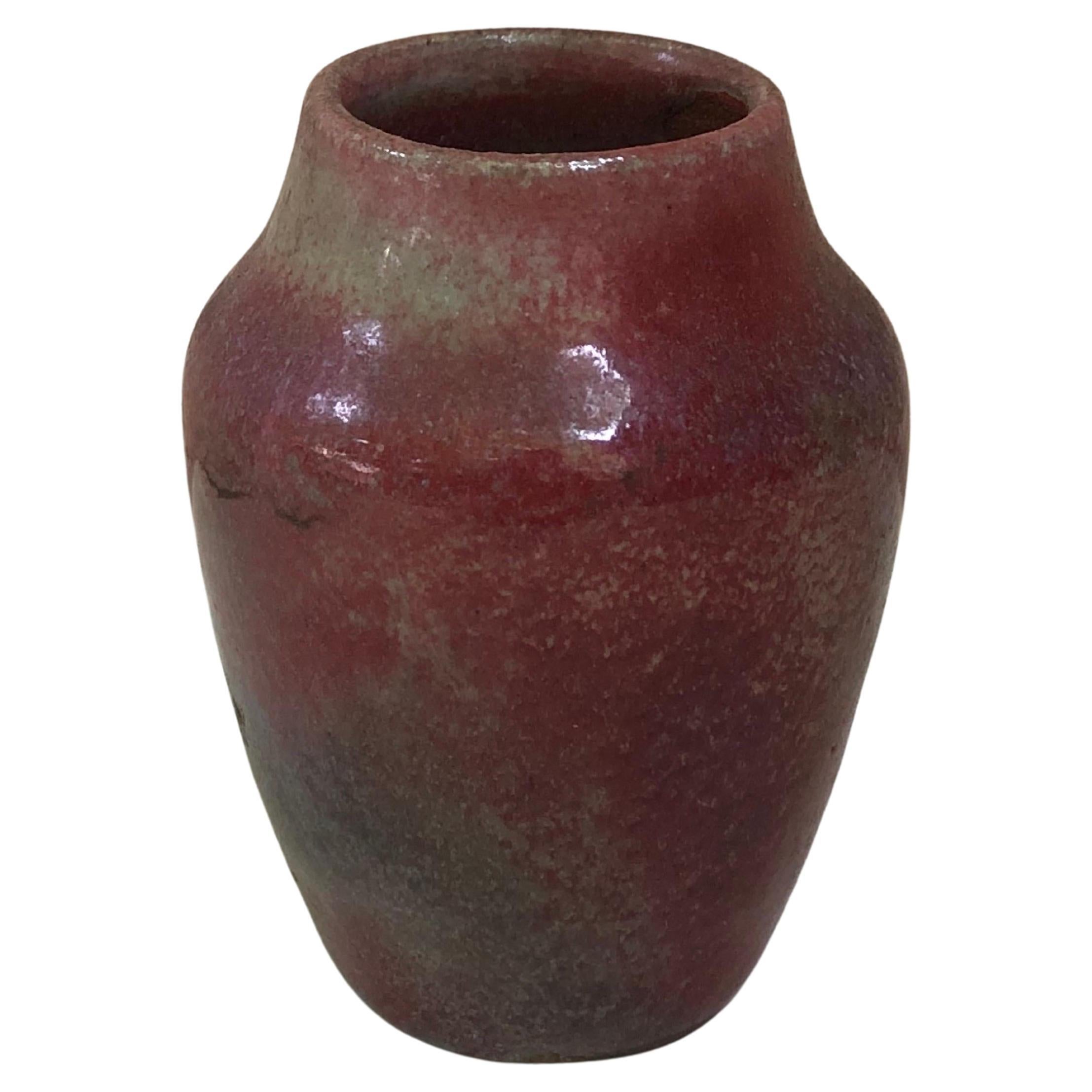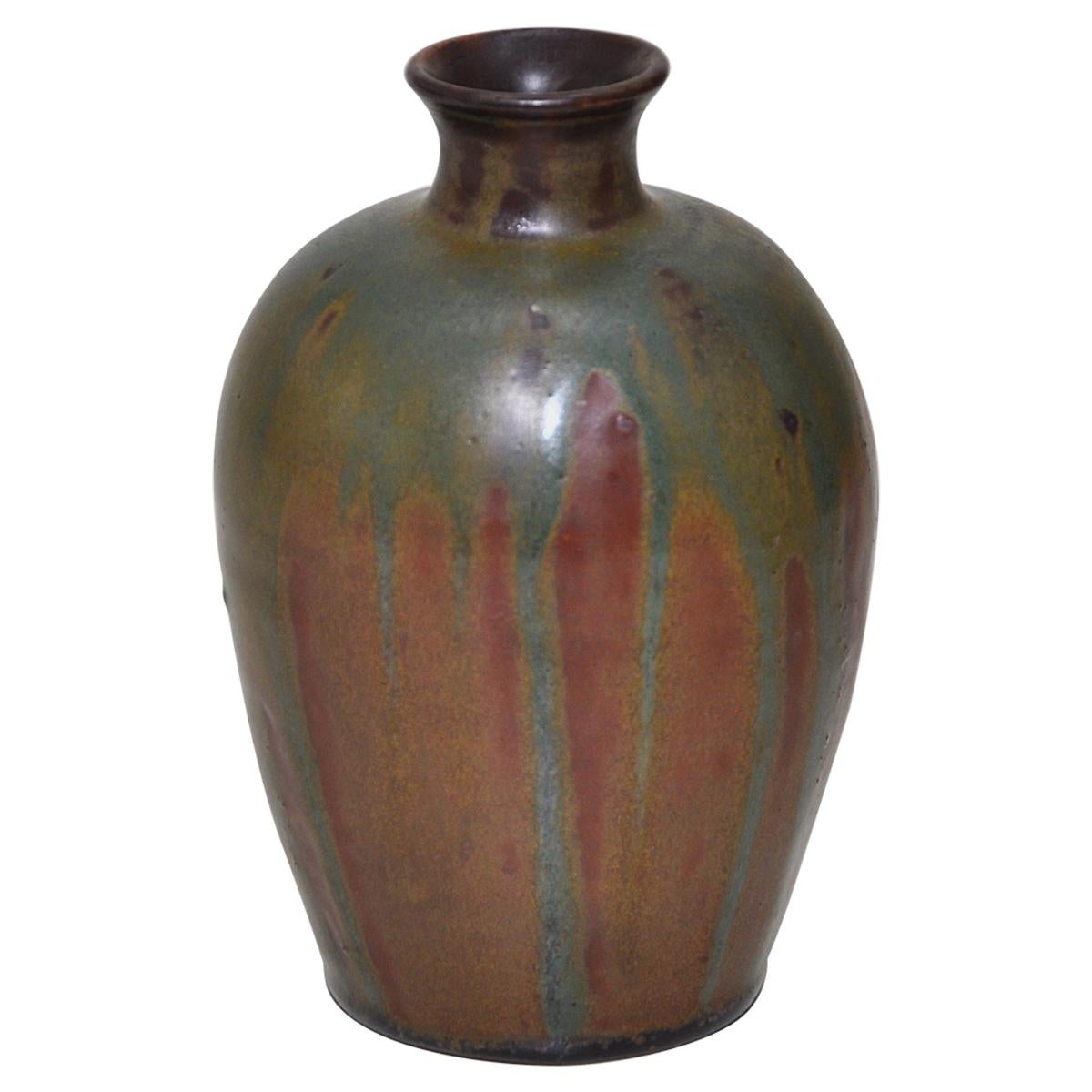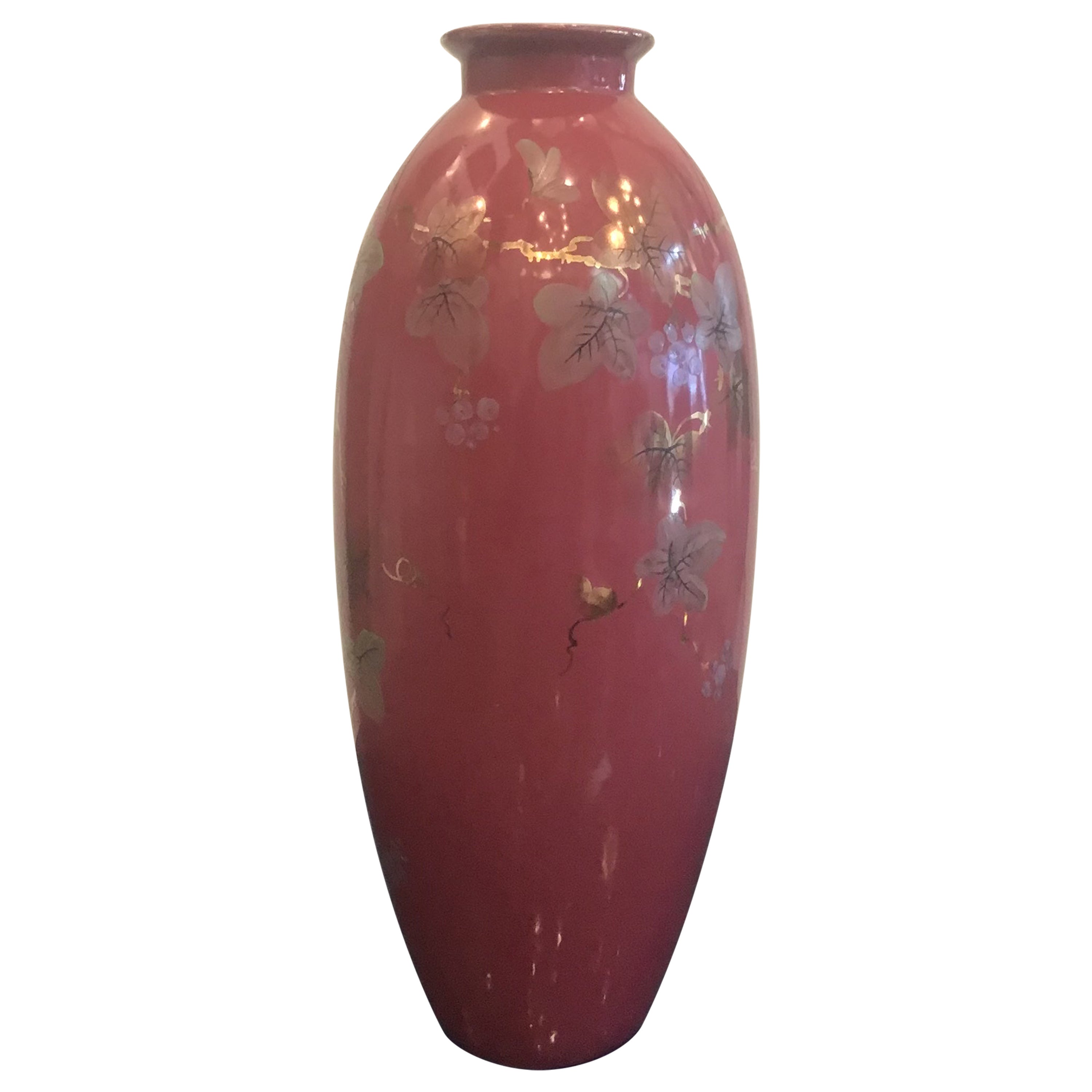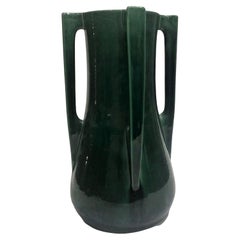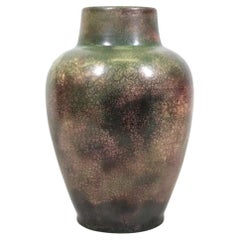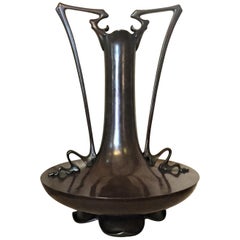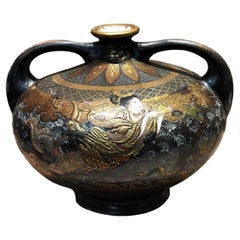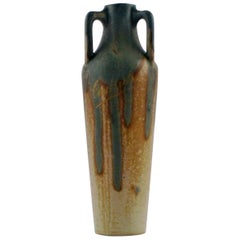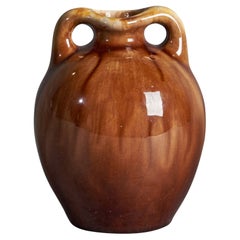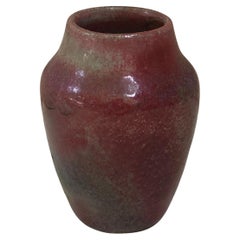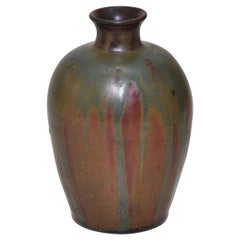Items Similar to Japanese Art Nouveau Awaji Ware Art Studio Pottery Flower Vase, ca. 1900s
Want more images or videos?
Request additional images or videos from the seller
1 of 8
Japanese Art Nouveau Awaji Ware Art Studio Pottery Flower Vase, ca. 1900s
$1,200
£902.89
€1,043.12
CA$1,695.91
A$1,841.43
CHF 975.17
MX$22,570.68
NOK 12,068.15
SEK 11,403.76
DKK 7,785.44
About the Item
Japanese Art Nouveau
Flower Vase
Awaji Ware Art Studio Pottery
ca. 1900s
ABOUT AWAJI WARE ART STUDIO POTTERY
Awaji pottery was made on the Japanese island of the same name between 1830 and 1939. Most of the pieces that we see here in the West were made sometime between the mid 1870's when Awaji began exporting pottery, and the mid to late 1930's when the last of the kilns closed. Awaji pottery comes in an abundant variety of shapes, colors, and decorative techniques. The glazes are often brilliant in tone and most are translucent and finely crackled. The ware is sometimes mistaken by the uninitiated for European majolica or American art pottery. Unlike majolica and the vast majority of Western art pottery, most Awaji pottery is robustly hand-thrown, with only small and complex forms molded. Some of the earlier ware is delicately potted, but the majority of Awaji-ware is more stoutly constructed and pleasantly balanced. The Awaji potters were masters of their craft who had an innate feel for the possibilities of the clay form. The result of their efforts is a pottery of exceptionally lively forms that have an informal and genuine feel, devoid of fussiness and pretension.
The ceramic body (or paste) is made of high-fired, white or cream colored clay that borders on stoneware. The formula apparently changed over time and varied from pink or buff, to white to grey. The glazes are lead based which gives the colors brilliance and makes the translucent enamels glassy and often iridescent. The most common Awaji glaze colors are a grass green, yellow that can range from pale lemon to deep amber, cobalt blue, and aubergine (a shade of very dark purple). Other glazes are a light green, dusty blue, light and dark turquoise, mirror-black, and burgundy. The Awaji potters were adept at creating unadorned monochromes, two-tone glazes, three-color glazes (sancai), incised decoration (most commonly featuring irises), and applied relief decoration.
DIMENSIONS
Height: 9-3/4 inches
Width: 4-3/4 inches
Depth: 3-5/8 inches
- Dimensions:Height: 9.75 in (24.77 cm)Width: 4.75 in (12.07 cm)Depth: 3.63 in (9.23 cm)
- Style:Art Nouveau (Of the Period)
- Materials and Techniques:
- Place of Origin:
- Period:1900-1909
- Date of Manufacture:ca. 1900s
- Condition:Wear consistent with age and use. We make our best effort to provide a fair and descriptive condition report. Please examine photos attentively for they are an important part of the description. Send us a message to request more details or discuss price.
- Seller Location:New York, NY
- Reference Number:1stDibs: LU2819337754312
About the Seller
5.0
Gold Seller
Premium sellers maintaining a 4.3+ rating and 24-hour response times
Established in 1993
1stDibs seller since 2017
85 sales on 1stDibs
Typical response time: 8 hours
- ShippingRetrieving quote...Shipping from: New York, NY
- Return Policy
Authenticity Guarantee
In the unlikely event there’s an issue with an item’s authenticity, contact us within 1 year for a full refund. DetailsMoney-Back Guarantee
If your item is not as described, is damaged in transit, or does not arrive, contact us within 7 days for a full refund. Details24-Hour Cancellation
You have a 24-hour grace period in which to reconsider your purchase, with no questions asked.Vetted Professional Sellers
Our world-class sellers must adhere to strict standards for service and quality, maintaining the integrity of our listings.Price-Match Guarantee
If you find that a seller listed the same item for a lower price elsewhere, we’ll match it.Trusted Global Delivery
Our best-in-class carrier network provides specialized shipping options worldwide, including custom delivery.More From This Seller
View AllJapanese Art Nouveau, Awaji Ware Art Studio Pottery Flower Vase, Ca. 1900
By Awaji Pottery
Located in New York, NY
DIMENSIONS:
Height: 12.5 inches
Width: 6.75 inches
Depth: 6.75 inches
ABOUT AWAJI POTTERY
Awaji pottery was made on the Japanese island of the same name between 1830 and 19...
Category
Antique Early 1900s Japanese Art Nouveau Vases
Materials
Ceramic
Arts & Crafts Chinese-Form Ceramic Vase, ca. 1900
By Roseville Pottery
Located in New York, NY
American Arts & Crafts
Chinese-Form Pauleo Pattern Glazed Ceramic Vase
In Manner of Roseville for Tiffany
Circa 1900
DIMENSIONS
Height: 15.75 inches (40.01 cm)
Diameter: 10.5 inch...
Category
Antique Early 1900s American Art Nouveau Vases
Materials
Ceramic
Japanese Art Nouveau Meiji Period Patinated Bronze Vase, circa 1900
Located in New York, NY
Although unmarked, this rare and important, grand but at the same exquisite patinated bronze vase has just a very few little details, defying the shape of the handles, as well as the...
Category
Antique Early 1900s Japanese Art Nouveau Vases
Materials
Bronze
Japanese Kyoto Fuzan Satsuma Ware Double-Handled Vase, Meiji Period, ca. 1900
Located in New York, NY
This beautiful end of Meiji Period Japanese Kyoto Fuzan Satsuma Ware double-handled vase has a gold plated intricate infinite circular relief pattern design and two images of goddess...
Category
Antique Early 1900s Japanese Taisho Vases
Materials
Porcelain
Japanese Emperor Shōwa Period Kiyomizu-Ware Vase, 18th Century
Located in New York, NY
Japanese Emperor Shōwa Period Kiyomizu-Ware Vase, 18th Century
Emperor Shōwa Period - from 1926 to 1989/1990
DIMENSIONS
Height: 9 inches
diame...
Category
Antique 1770s Japanese Japonisme Vases
Materials
Ceramic
Japanese Meiji Period Porcelain Vase by Shimazu Gyokuzan, Ca. 1890
Located in New York, NY
Japanese Meiji Period Porcelain Vase by Shimazu Gyokuzan, Ca. 1890
DIMENSIONS
Height: 18.5 INCHES
Diameter: 9 inches
DETAILS
Meiji Period (1868 -1912) – Ca.18...
Category
Antique 1890s Japanese Japonisme Vases
Materials
Porcelain
You May Also Like
French Ceramic Vase, Cauterets, Conical Vase, France, circa 1910
Located in København, Copenhagen
French ceramic vase, Cauterets.
Signed. Conical vase, blue-gray glaze running on beige-brown ground, France, circa 1910.
Heights: 17 cm.
In perfect c...
Category
Vintage 1910s French Art Nouveau Vases
$352 Sale Price
20% Off
Finnish Designer, Vase, Earthenware, Finland, 1920s
Located in High Point, NC
A brown-glazed vase designed and produced in Finland, c. 1920s.
Category
Vintage 1920s Finnish Art Nouveau Vases
Materials
Ceramic
Small Art Deco Pottery Vase Auguste Delaherche, Circa 1930
By Auguste Delaherche
Located in Austin, TX
Art Deco pottery vase signed Auguste Delaherche Circa 1930.
Number 028.
Category
Vintage 1930s French Japonisme Vases
Materials
Pottery
French Art Nouveau Ceramic Vase by Lucien Arnaud Green Brown
Located in Belfast, Northern Ireland
French Art Nouveau ceramic vase, of ovoid form with narrow neck, covered with flowing dark green and brown glaze of Japanese inspiration.
A very nice and subtle piece.
With the inc...
Category
Early 20th Century French Art Nouveau Vases
Materials
Ceramic
Richard Ginori Vase 1950 Ceramic, Italy
By Richard Ginori
Located in Milano, IT
Richard Ginori vase 1950 ceramic Italy.
Category
Vintage 1950s Italian Other Vases
Materials
Ceramic
Very Rare Run Glaze Flower Vase, Collector's Item, 1920s, Art Deco, France
Located in Wien, AT
Rare vase, made in France in the 1920s with masterfully executed run glaze in earth tones.
The compensated shape of the vase shows an upper round outlet surrounded by three specially designed handles. The spherical ceramic body is vertically notched three times, which gives wonderful plasticity.
The entire surface of the vase is covered with run glaze - a masterful surface effect. The colors vary from different shades from brown to green to blue.
The shape of the vase is modelled on ancient vessels from the Chinese / Asian area.
Measurements approx.: height 21 cm - 8,27 in, diameter 24 cm - 9,45 in
The unusual choice of colors and the special plasticity of the vase based on historical models make this original Art Deco object...
Category
Vintage 1920s French Art Deco Vases
Materials
Ceramic
More Ways To Browse
Japan Ware
Antique Blue Mirror
Sancai Glazed
Japanese Awaji Vase
Burgundy Mirror
Antique Turquoise Mirror
Vase With Grapes
Wabi Sabi Ceramic
Yellow Bitossi
Alfredo Barbini Clear Glass
Art Deco Amethyst Glass
Art Deco Nouveau Vases Pair Large
Art Nouveau French Pottery
Art Nouveau Pewter Vase
Bitossi For Rosenthal
Black Ikebana Vase
Black Onyx Vase
Black Opaline Glass Vase
